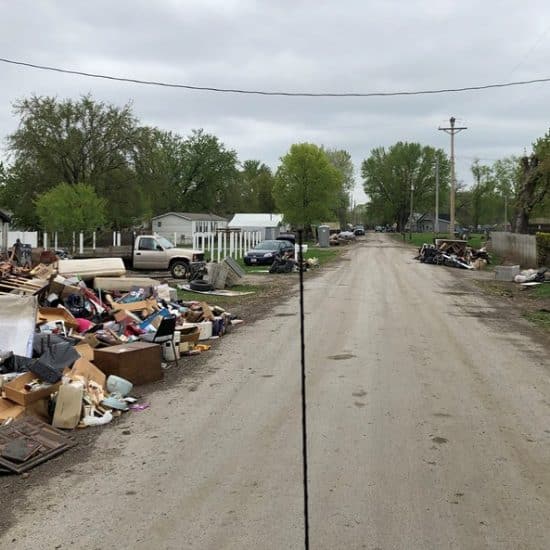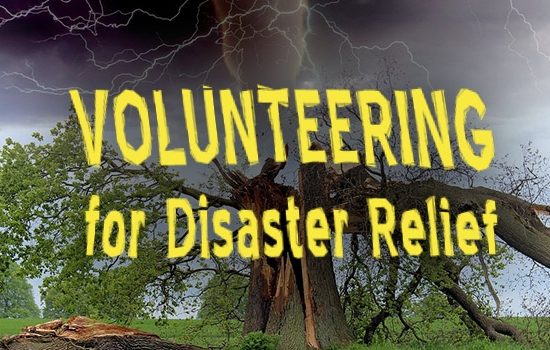The previous column looked at how individuals can respond natural and man-made tragedies in useful ways.
 Ken SatterfieldWhat happens when a disaster affects our own community? Recent news has been filled with about every type of disaster that can be imagined short of a locust plague. In these times, our churches are challenged to minister in multiple ways.
Ken SatterfieldWhat happens when a disaster affects our own community? Recent news has been filled with about every type of disaster that can be imagined short of a locust plague. In these times, our churches are challenged to minister in multiple ways.
A study by Wheaton College’s Humanitarian Disaster Institute of more than two dozen churches and congregations affected by Hurricane Katrina in 2005, three out of four churches did not have comprehensive plans in place for both church property and member communication (tinyurl.com/dr-help1).
Disasters differ; the effects of a blizzard are not the same as a tornado. Nor do those in the deep South need to worry much about that blizzard. What are threats in your area? Consider now how your church needs to prepare itself, help its congregation and minister to your community; it takes more time than filling out a checklist or reading a column.
Churches can start the preparation process with an insurance analysis of your coverage and developing an emergency disaster action and recovery plan. Church Mutual’s website has comprehensive safety resources, including emergencies (tinyurl.com/dr-help2). Download and start to work on church preparedness guides from the North American Mission Board (tinyurl.com/dr-help3) and ECLA (tinyurl.com/dr-help4).
These documents should help you minimize property damage, develop a communication plan, and develop a process for making decisions. For instance, should staff stay on site or relocate? Who decides if services are canceled? How can existing ministries be adapted in case of an emergency?
Store information online for remote access and put church numbers on phones that can be used even if power is off.
NAMB suggests a three-pronged approach to prepare, connect and respond. Take part in a community planning process for the whole community, and partner with relief organizations.
Encourage congregation members to develop family disaster plans and supplies. Ready.gov is a site that helps people plan (ready.gov/make-a-plan) and assemble emergency supplies (ready.gov/build-a-kit). Just like weather cancellation policies, they should know how you will contact them; they in turn should know how to update their contact information if they have relocated.
Tell members how and where they can volunteer. That includes checking on members without access to technology. Encourage them to be trained through Southern Baptists (tinyurl.com/dr-help5 or 800-634-2462) and Community Emergency Response Teams (tinyurl.com/dr-help6).
Finally, help your community with the assets your church community. Which of your members are first responders? Who can provide professional help – and how can your church support them? How can the church coordinate teams? Who will share their homes? Can childcare help those dealing with loss and disruption? Can the church have other materials on hand?
Church-sponsored events can promote preparation, know how to turn off utilities and administer first aid and CPR (https://www.ready.gov/safety-skills).
At every level, spiritual preparation will provide hope and be ready for theological questions, without exploiting traumatized victims or hosting other volunteer groups that might.
In a piece for USA Today, Ed Stetzer reminds us of the answer given by an ordained Presbyterian minister more popularly known as television’s Mr. Rogers, when asked about what to tell children looking at disaster coverage (tinyurl.com/dr-help7). He passed along his mother’s advice: “Look for the helpers.” May we follow that advice so that people can look to those who minister and see the image of Christ.
Ken Satterfield,a former media specialist, is marketing coordinator for Word&Way.
See also:
Bracing for Impact: How to Prepare Your Church for a Natural Disaster (Facts & Trends)
Churches Play a Growing Role in Emergency Management (Emergency Management)
Disaster Relief Ready Church: Be Preepared for Crisis Response (NAMB)
How Churches Can Prepare for Disasters (Christianity Today)
Hurricane Harvey recovery: Faith-based groups lead relief efforts (USA Today)
10 Lessons I Learned Leading My Church Through a Natural Disaster (Facts & Trends)
Praise and Preparedness (Georgia Emergency Management Agency/Homeland Security)
What’s the risk of: Flood | Tornado | Wildfire | Earthquake | Crime | Clmate Change Threats | Hazard Risk Assessment Tools



